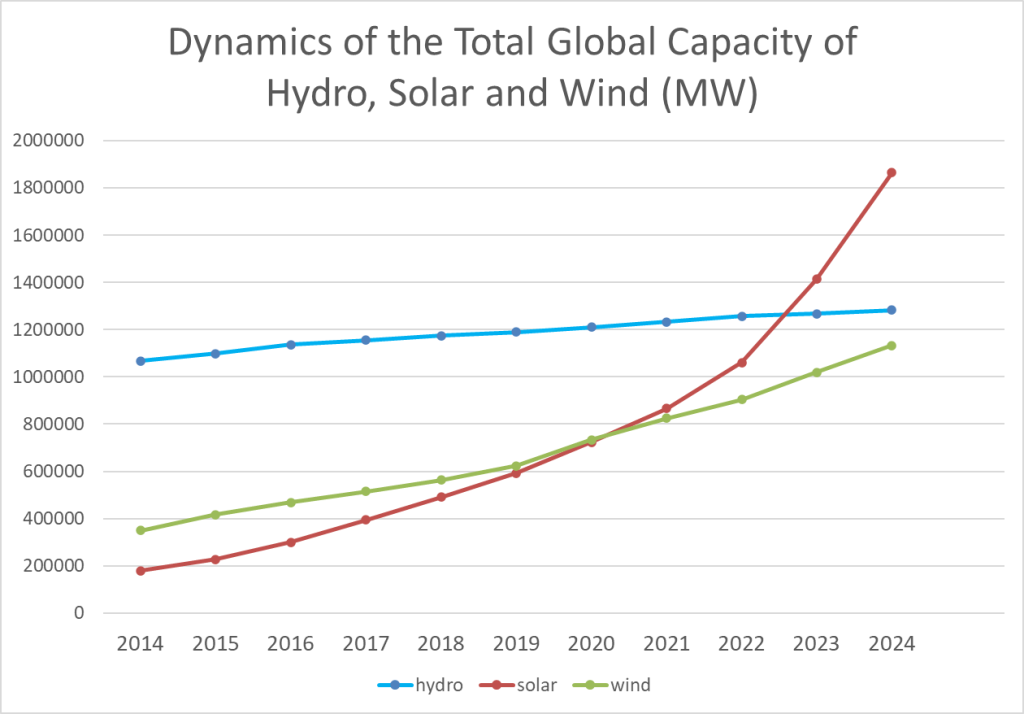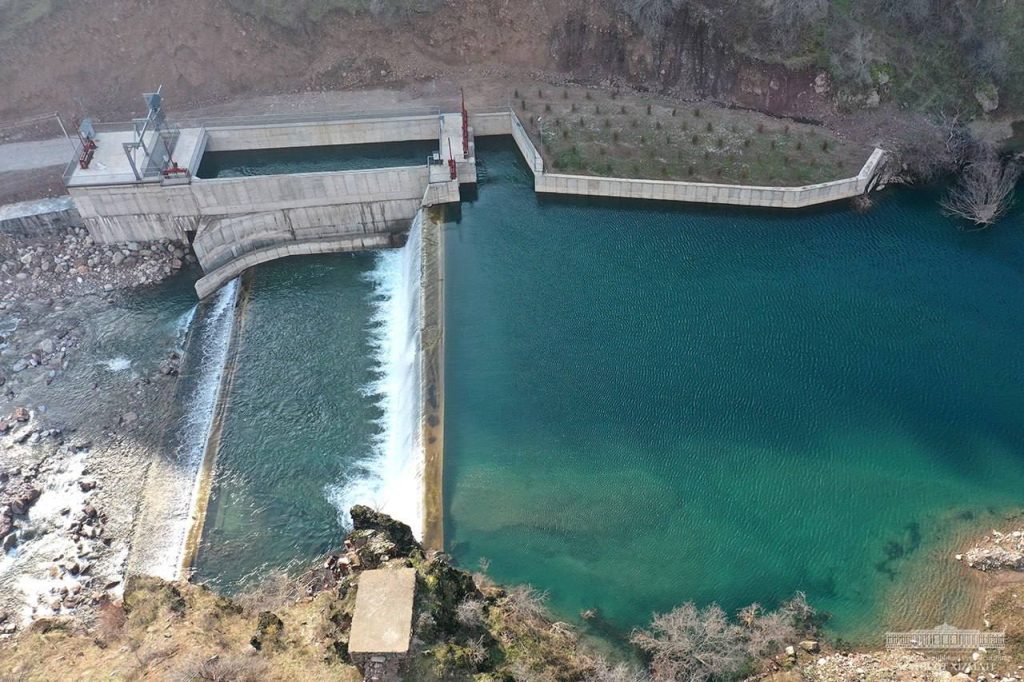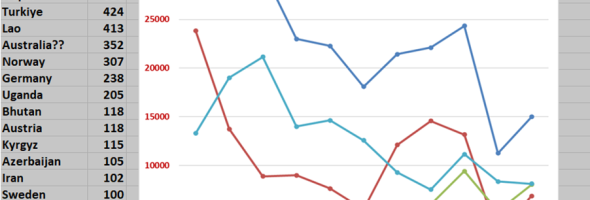This week the International Renewable Energy Agency (IRENA) released a new Report Renewable Capacity Statistics 2025. Its contents are very predictable, almost boring: a new wave of unprecedented growth in renewable capacity installation in 2024. The 585 GW addition of RE last year holds a 92.5% share of the total global electricity capacity expansion and presents a record rate of annual growth (15.1%).
It is dominated by solar power with 452 GW added last year. China alone added 278 GW to the total expansion, followed by India (24.5 GW). Wind energy additions amounted to 113 GW (+11.1%).

IRENA specifically emphasized “rebound” in conventional hydropower additions from 11 GW added in 2023 to 15GW in 2024 (+1.2%). This is an undiscernible 1/40 (2.5%) of total renewable capacity growth. What is interesting, the report also shows a decrease amounting to 6 GW of hydropower capacity in EU, Argentina, Russia and Ukraine. In Ukraine it is due to vulnerability of energy infrastructure to Russian bombing, while in other countries the reasons for decline are unclear.
Approximately 7 GW of conventional hydropower was installed by China. The rest of conventional hydropower was primarily put online in Pakistan, Ethiopia, Viet Nam, Tanzania, Indonesia, Nepal.

Graph: Hydropower additions in 2024 and during the last decade. (Compilation -RwB).
Despite the insignificant size of the new conventional hydropower fleet, it is associated with disproportional damage to natural ecosystems, and destruction of the last free-flowing rivers. Reservoirs also displace and impoverish local communities.
In China dam projects, mostly proceed in high mountain river gorges of Tibetan Plateau, destroying unique biodiversity and displacing minority communities.
In Pakistan, inauguration of the Chinese-built Suki-Kinari HPP was accompanied by a mass protest of people who never received just compensation for the drowning of their lands and ruining cemeteries of their ancestors.
In Tanzania, new installation comes from the Julius Nyerere dam, built by Power China under disguise of Egyptian intermediary contractors, which destroyed key ecosystems of the Selous Game Reserve -one of the greatest World Heritage sites in East Africa.
In Indonesia, the largest hydropower dam under construction by Power China -Batang Toru is a tombstone for the new species of ape -Tapanuli Orangutan, as it dissects the only known habitat of this species.
In Uzbekistan, which according to IRENA installed only 9 MW in 2024, the key achievement is a tiny 4.5MW hydropower cascade on Ugam river, which destroyed habitat for at least 4 species of rare endemic fishes and blocked a watercourse flowing from the Western Tien-Shan World Heritage site without any assessment of impacts on its unique ecosystems.


Each conventional hydropower station means potential destruction of a natural river. In a situation where such hydropower no longer has significant economic advantages and is inconsequential for energy transition, every decision to build a new dam is a potential environmental crime against humanity and nature.
China also installed 7.5GW of pumped storage hydro (PSH) in 2024. Additional 0.5 GW of PSH was in installed in France and Morocco. All in all, PSH technology is more efficient as energy storage and can be build off-stream (so called “closed loop” PSH) to avoid damage to natural aquatic ecosystems. However, even such design may lead to unacceptable environmental impacts, such as huge damage from the Snowy-2 PSH in Australia, which is located in a national park. Ill-placed renewables present a huge conservation problem worldwide, while governments and investors lack political will to avoid it from recurring.


